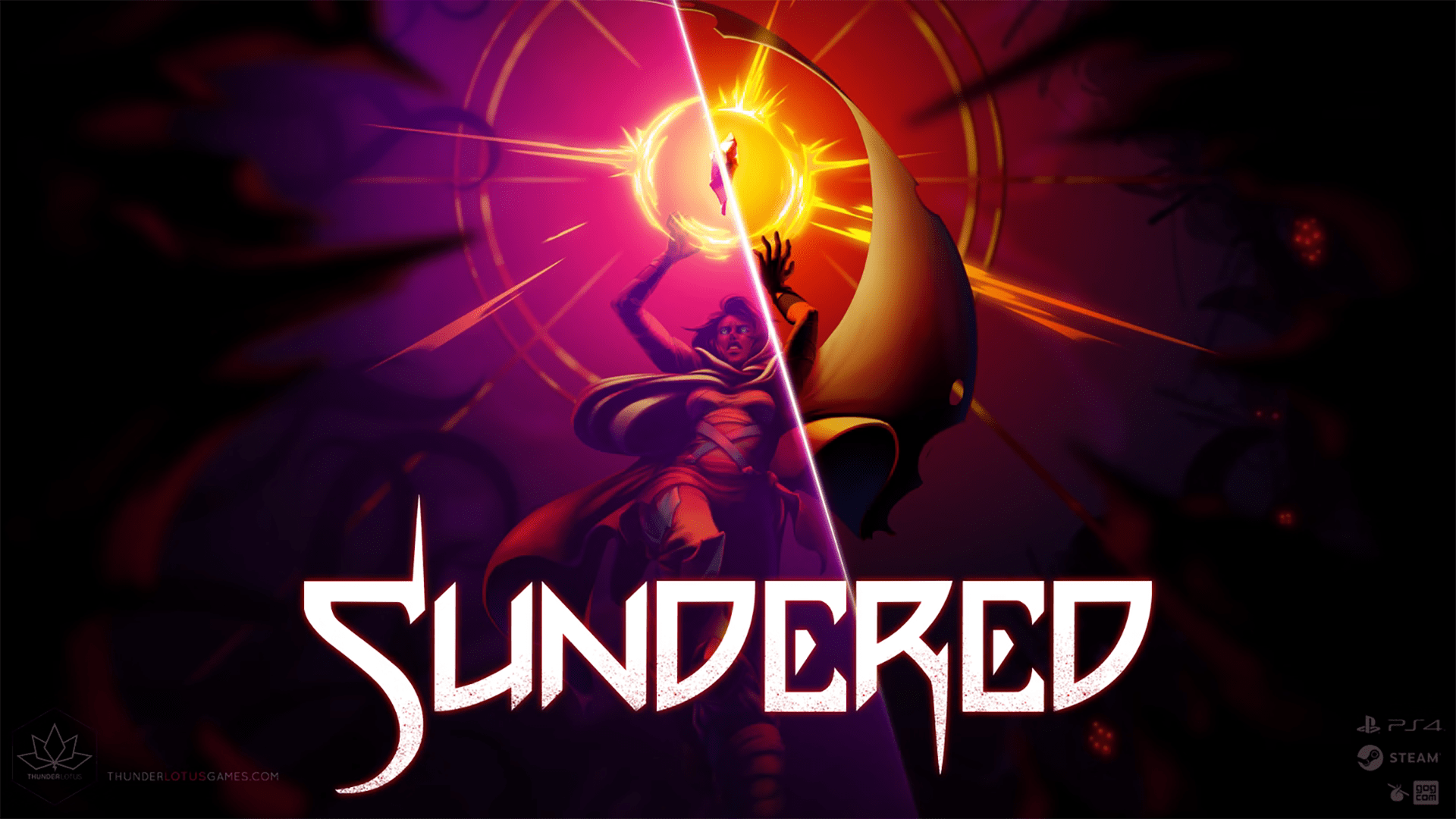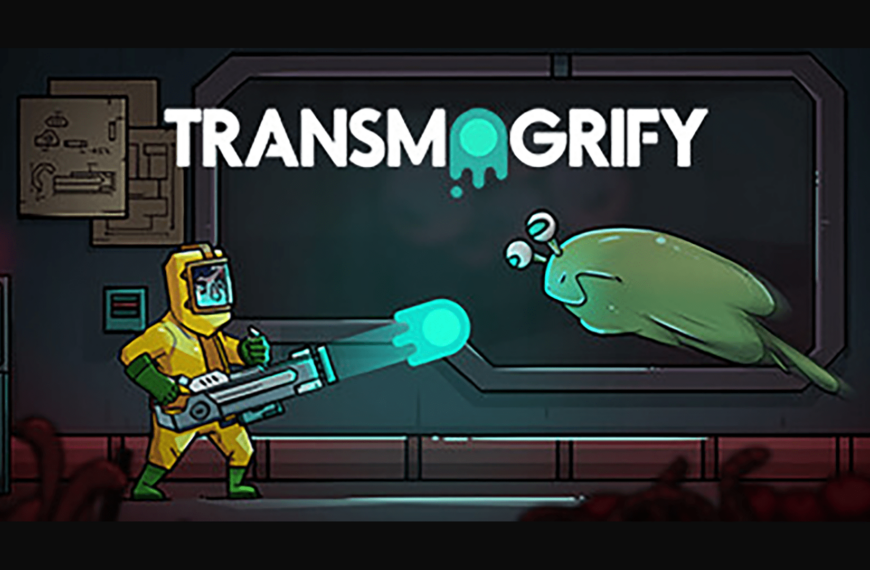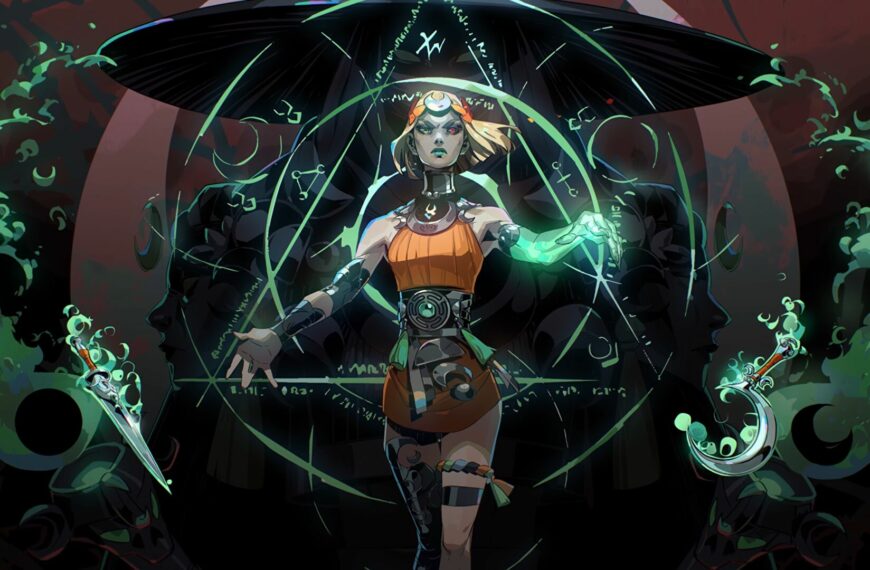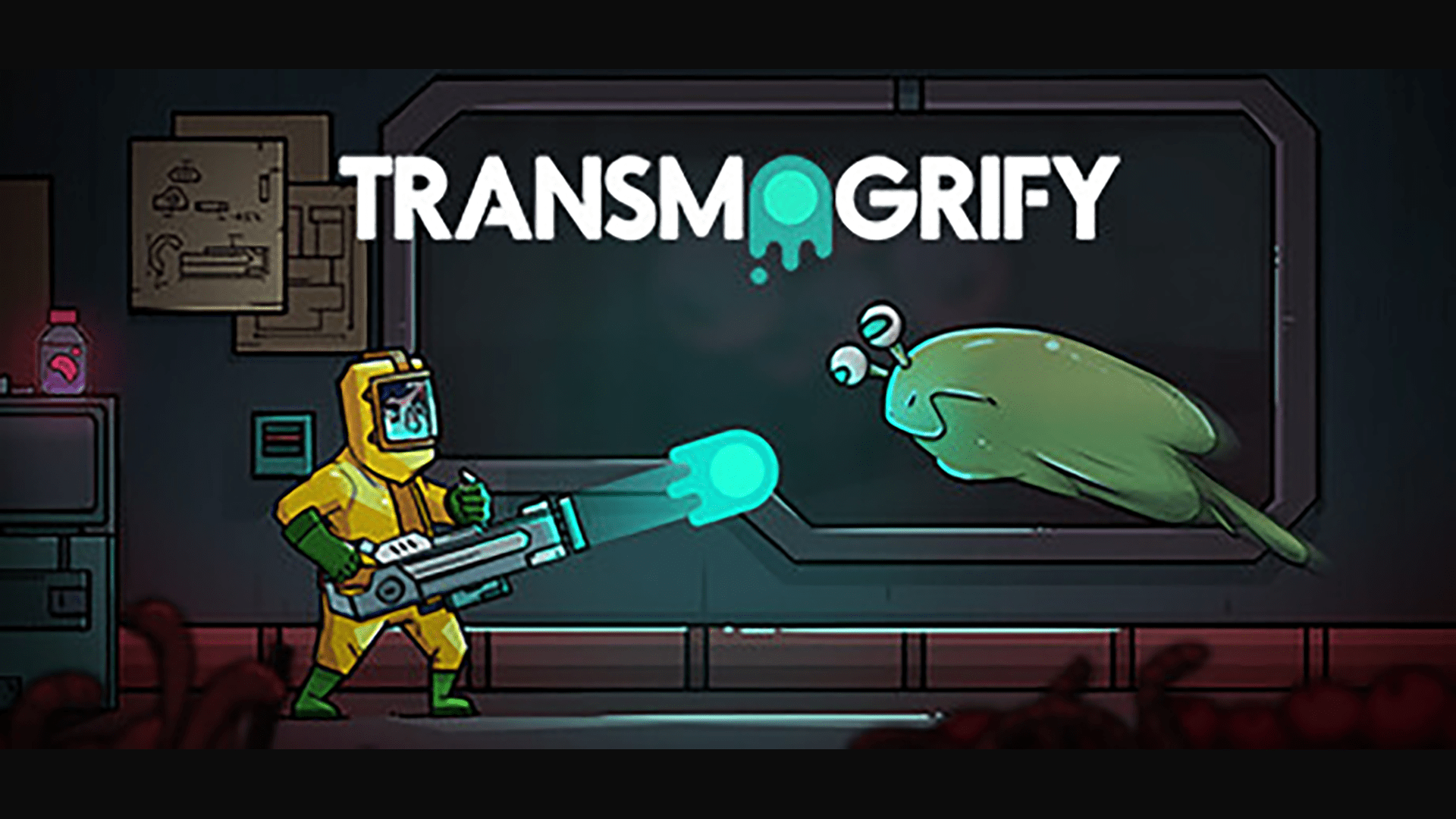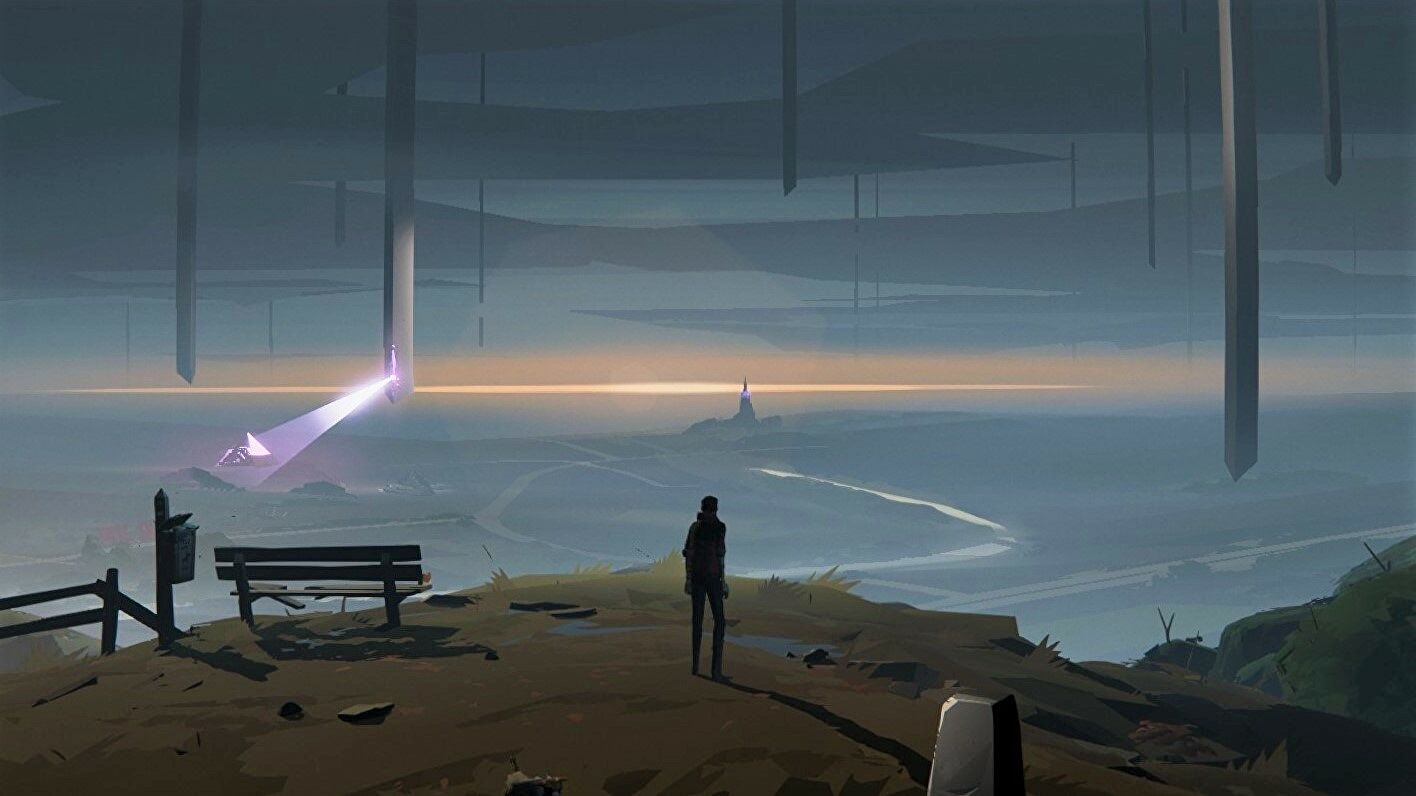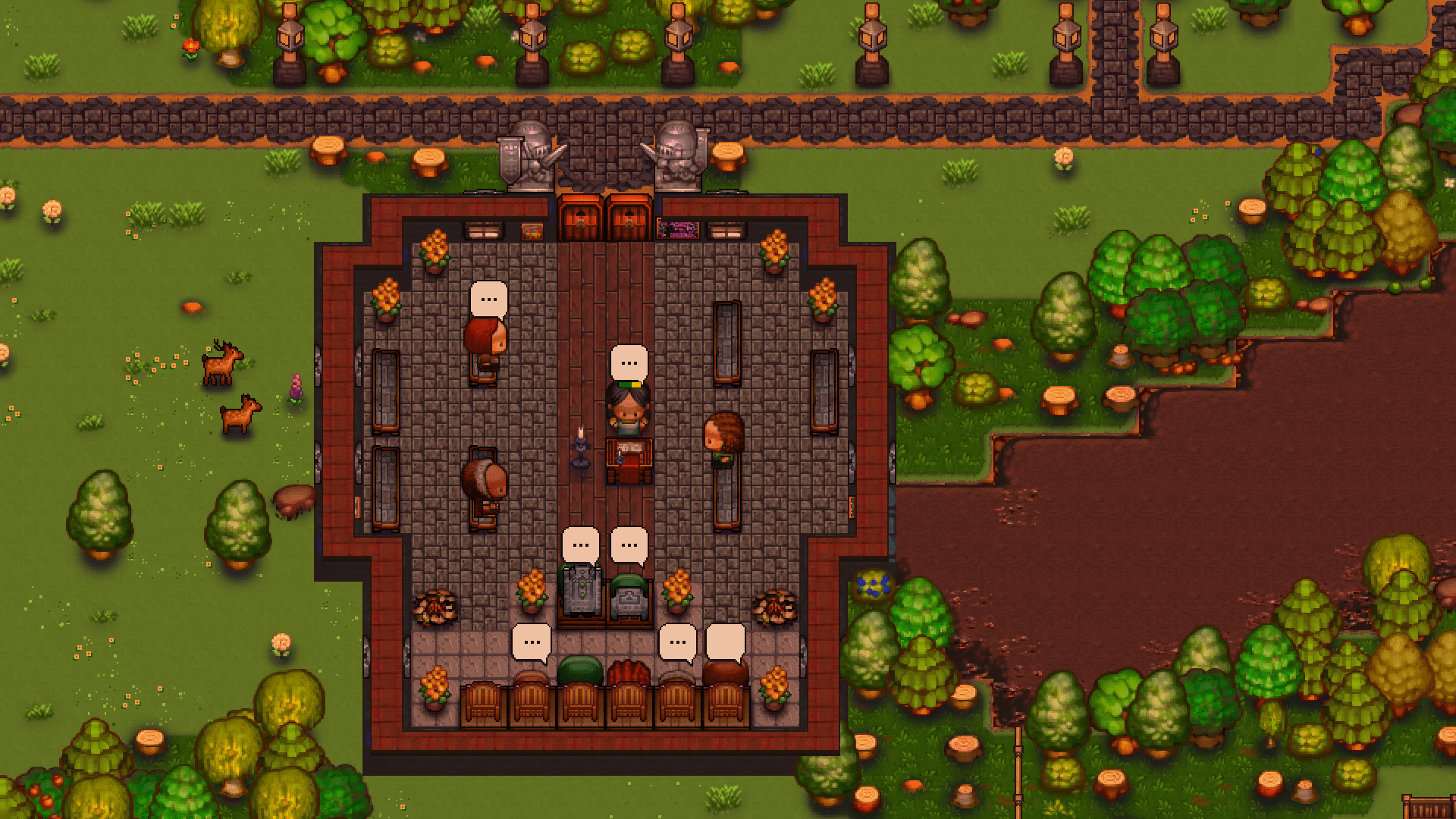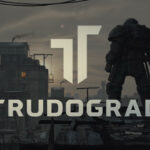It’s certainly strange to refer to a game taking heavy influences from classical Cosmic Horror as a breath of fresh air, but that’s just what happens when you end up reviewing two games about war back-to-back during, shall we say, historically significant times.
Sundered: Eldritch Edition is a metroidvania roguelike, which is a sentence that sounds like it would get me accused of witchcraft a few hundred years ago. You play as Eshe, a woman wandering the desert only to be forcibly dragged into a chaotic nightmare labyrinth by horrors beyond mortal comprehension. A tale as old as time.

Resist or Embrace
You will spend most of your time in Sundered running around large (and very pretty) environments, or fighting a horde of monsters to the death. Sundered does not have preset monster spawns. Instead, sometimes a handful will jump you. But the main way that monsters spawn in what the game itself refers to as Hordes. Signaled by the sound of a gong, Hordes, as the name would suggest, is a large group of enemies bent on eating your face. The difficulty of the Horde depends entirely on where you are when they spawn. No matter how many bosses you’ve killed or how strong your basic attack is, if you’re in an early area, the Horde will consist of early enemies.
Sundered has some of the best action-platformer controls I’ve ever used. I never didn’t feel in control of Eshe, except for the very first time I fired a gun and wasn’t expecting the kickback to launch me across the room. Your attacks are fluid and combo into each other perfectly. You have good reach and you can easily tell when you or an enemy are taking damage. Enemies inflict knockback but you don’t, which means a nasty hit can sometimes propel you out of immediate danger but you aren’t at risk of knocking an enemy out of your own combo.
And the midair attacks basically just let you fly as long as you hit. Especially once you unlock the double jump, as hitting an enemy while in midair refunds your second jump.
Death has no real consequence, other than sending you back to the hub and forcing you to make your way back to where you died. You don’t even lose any money, so you can upgrade yourself before you set out again.
Sundered is a hybrid of Metroidvania and Roguelike. For those who may not know, Metroidvania’s are games emphasizing exploration where the main means of progressing is acquiring a new ability that either opens doors or provides new movement options or something to that extent. Roguelikes on the other hand are based around chipping away at an endless series of procedurally generated levels, losing most or all of your character upgrades on death, but typically have some means of permanently acquiring upgrades or abilities to make your next attempt slightly easier.
Sundered combines these two by having certain rooms ‘fixed’ in their positions and having large zones connecting the fixed rooms. These zones generate a new pathway from entrance to exit every time you die. While interesting in theory, this quickly loses its luster once you realize that the cost of this is that a lot of the rooms feel the same, even if they aren’t. And a lot of the rooms actually are the same. Of the three main areas, the Holy City is definitely the worst offender.
See, the large areas are broken up into smaller areas, mainly those in-between connecting areas I just mentioned. And those are usually supposed to be something in-universe. For example, the first zone, a military camp, has an armory, a barracks, and a research lab. But since they can only fix so many rooms in place without losing the roguelike elements, these three areas are functionally the same but in different colors. The reason the Holy City is the worst about this is because all of the areas in it are ‘Eldritch Cave Thing,’ whereas the military camp has both jungle caves and metal buildings and the Cathedral has bored tunnels and weird eldritch floating buildings. So the fact that just about every room in the Holy City is the same but palette swapped stands out much faster.

But the real cost of this procedural generation is that navigation becomes laborious when you’re retreading old ground. If you’re careful, you can actually go a long time without dying in Sundered. (Especially since you can at any time pause the game and warp back to the hub.) So you might go a long time without regenerating the pathways you’re walking. But they all feel the same, and it becomes hard to keep in mind any landmarks to remember how to get where you’re going as efficiently as possible. After all, the only landmarks that matter are the fixed rooms.
Lastly, there’s only so many rewards that can be given to encourage exploration. Many Metroidvanias have some kind of upgrade you can find by exploring, like increased health or ammo. But since the world is procedurally generated, these rewards can’t be hidden the same way. The end result is that the only thing you can find for poking around off the beaten track is money, perks—equipable passive abilities, usually with a thematic downside—and more money. It is almost always money.
Because, as stated, hiding upgrades in the world is not as feasible, Sundered instead has a skill tree system. At the hub in the center of the map, you can spend money acquired by killing enemies and smashing containers to improve your states and purchase new small upgrades, like letting your basic attacks destroy projectiles. I actually really like this system. The skill tree is dense with many branching paths leading to capped abilities. However, each stat increase on the skill tree has to be purchased to completion before you can move on to the next. Which can be very pricey very quickly. And I found the optional upgrade that gave me a discount! Especially since your playstyle may not use the things you upgrade much. I don’t use the cannon often because of its massive kickback, but I still have to buy cannon damage upgrades to move along the tree.
Also Read
Transmogrify PC Review: The Best Way To Defeat An Enemy
A video game protagonist wakes up in an on-fire science lab with nothing but an AI and a high-tech gun to…
Defy the Gods as a Witchy Moon Goddess in Hades 2
Greek-mythology-themed roguelike Hades is getting a sequel, but developer Supergiant has kept the details scant beyond a Hades 2 reveal trailer…
Though even with the rapidly escalating upgrade prices and forcing me to fully invest, the skill tree is pretty easily broken if you know what you’re doing. Certain areas in the game spawn infinite enemies while you’re there, and the Eldritch Edition release added in special puzzles, including one that lets you summon infinite enemies. These enemies drop money. If you have the time and patience, you can basically buy out the whole skill tree whenever you want. Of course, certain branches of the tree are completely locked off until you acquire a specific ability, but you can’t ever lose money other than by spending it, so that’s not really an issue.
Now, a Metroidvania lives and dies on two things: its explorations and its unlockable abilities. I’ve detailed the exploration rather extensively, so let’s talk new abilities. Sundered has some of the coolest new movement options I’ve seen in a Metroidvania. Most of them aren’t anything new to the genre. The air dash and double jump are both fairly standard and the grappling hook is hardly new. But it makes use of these somewhat staple abilities really well, even with the level design limitations caused by the procedural generation. The ability that I personally love the most is the one that lets me just run up walls, as it’s the one that had the biggest impact on me. It made me view the world and how I traversed in an entirely new light, and if there’s something like it in other Metroidvania’s I haven’t seen it yet. Simple and elegant.

Death Is Not An Escape
Sundered is drawn by hand. And it shows. It is exceptionally pretty.
It’s easiest to see the art style come through on the boss fights, each of which is an absolute colossus, taking up a massive chamber just to house them. (Which, in a clever bit of design, gives you the layout of the arena before the battle begins, which, trust me, you will need).
I’d love to go into more detail about the boss designs, but I think it’s best that you see them for yourself. Nothing quite matches the feeling of seeing one of these things in motion for the first time.
The animations are equally gorgeous. Eshe in particular has a number of different attack animations, from her several-hit combo to her vertical attacks, having different up and down attacks, as well as multiple midair attacks. Each of which has its own unique animation and movement. And, of course, her finishers. When charged up you can unleash a powerful directional attack, which also has multiple aerial variants.
There aren’t as many different kinds of enemies as I would like. Each area generally has a handful of enemies it throws at you in the hordes. There is variation. Some enemies are dependent on where you are in the area, and each of the three big areas has their own monster pool to spawn against you. But those monster pools are small.
Most of the difficulty curve in Sundered comes from variant enemies. Each enemy has three different tiers of threat. Each tier has its own visual distinction, from normal to red to gold. And the enemies grow larger the more dangerous they are. This visual distinction ranges from ‘virtually identical’ to ‘dear God what is that thing.’
The music in Sundered is generally quiet. Subtle. But it’s also very good. It sounds like a full orchestra, and it captures a tone of fear and dread masterfully. This is technically a cosmic horror game, even if all that horror can be beaten to death. The music helps with the feeling of isolation.
Naturally, the sound effects and sound design is more than up to par to fit in with the music. Sundered is a treat to listen to, with each sound telling you quite a lot of what’s happening. Audio cues are a useful way to tell what’s happening even if you can’t see it yet.
Sundered has a fairly simple story. The caverns where Eshe is trapped were once a prosperous and thriving city full of eldritch cultists. By the time she’s arrived, everything has already gone wrong, and if anyone in the caverns is still capable of anything resembling enough rational thought for communication, I sure haven’t found them yet.
Aiding Eshe in her quest to be literally anywhere else is The Shining Trapezohedron. Don’t google that, you’ll figure it out as you go. This cursed crystal thing that is hiding inside her body whispers promises of power in exchange for using Elder Crystals acquired from bosses and minibosses to corrupt her abilities while repeatedly belittling human ability. It speaks exclusively in red flags and snark is what I’m saying.
Most of the story is told through lore on Eshe’s acquired powerups or from the Trapezohedron’s narration in large crystal rooms, describing the fall of the outside world and the subsequent nightmare faced by the military company that stumbled their way down here before you.
This works quite well, seeing as Eshe actually does have a personal investment in these events. Namely, that while most of these people are dead, not all of them are. And being dead is not the same as not being a threat to her. Eshe gets the chance to personally meet some of the major players of these events. Usually trying to kill her.

Conclusion
While I’m not fond of the roguelike elements and some of the compromises they forced, Sundered is a solid entry into the Metroidvania genre, with incredible art and sound design.
Our Rating
Story
Graphics
Controls

